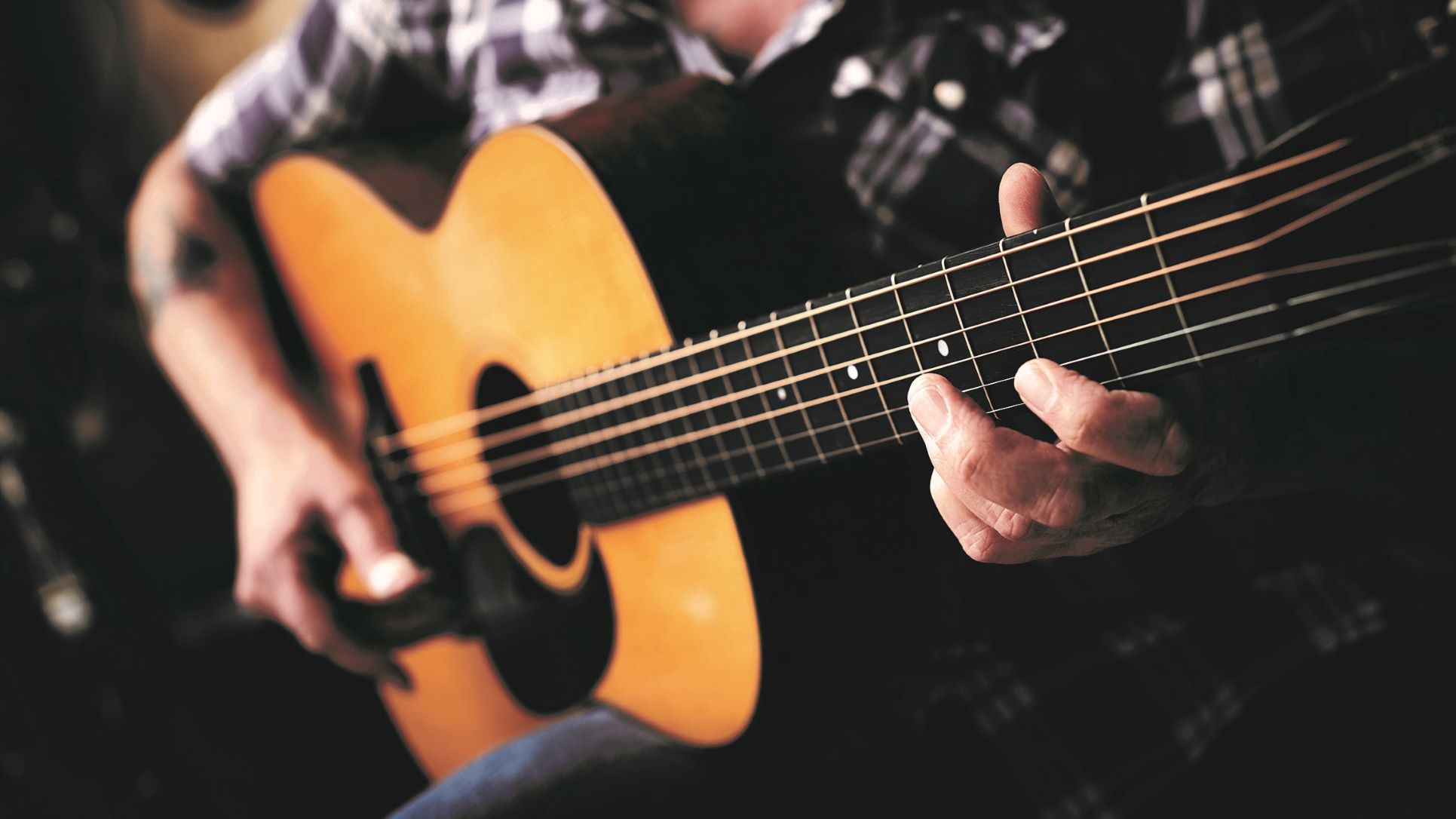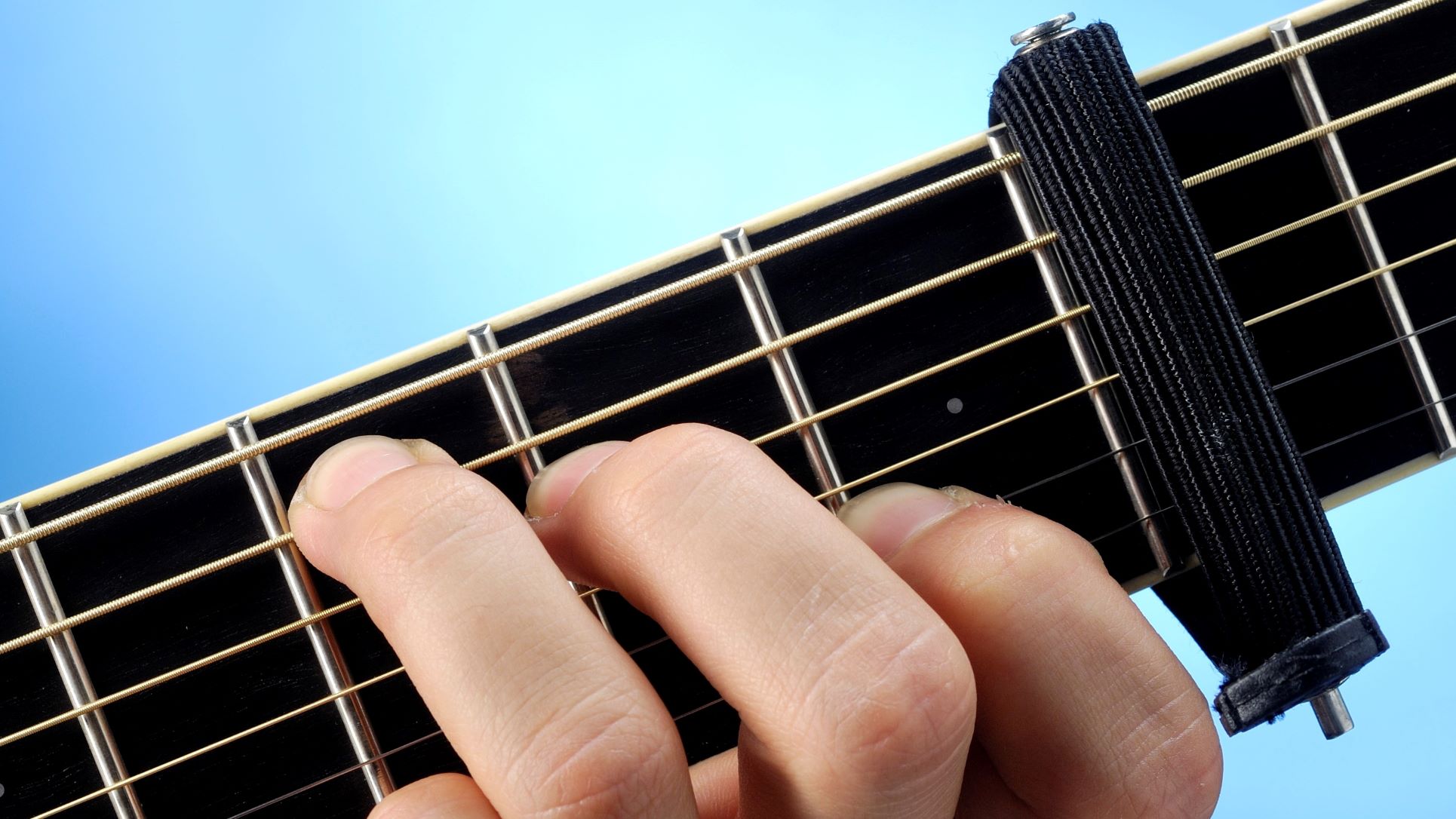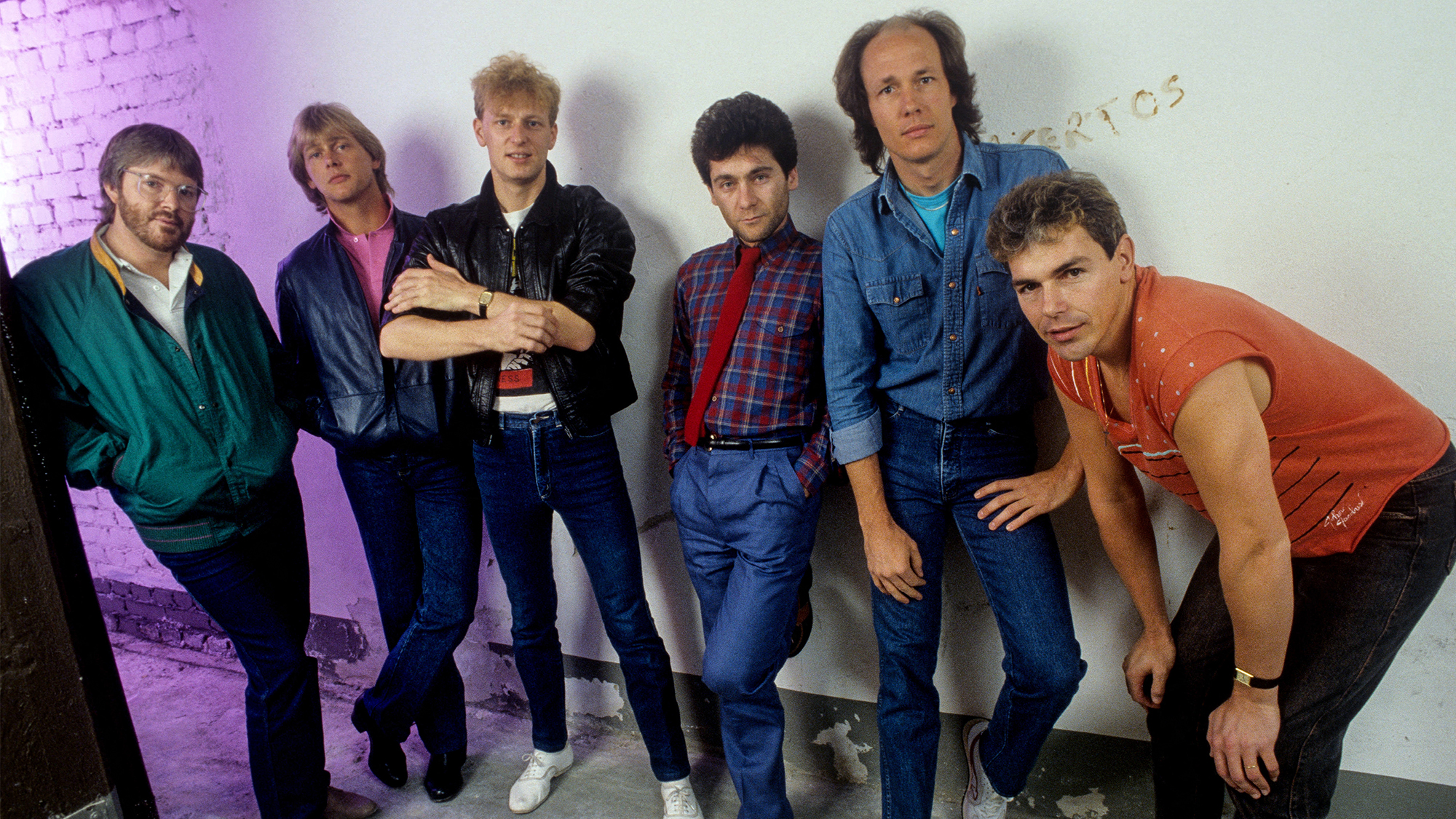Five Great Tips Every Singing Guitarist Needs to Know
How to use your guitar to find the best key for your voice.

Having some singing ability gives you an artistic leg up on guitarists who only work the fretboard, and it makes you more hirable and desirable. Whether you have a dynamite voice or can barely carry a tune, these tips can help you maximize your magic as a singing guitarist.
1. Pick the Best Key
It’s normal to want to play a cover tune in its original key. But if the melody lies outside your vocal range – or if you’ve dreamed up an alternate melody that’s an unrealistic stretch for your vocal cords – you won’t do the song or yourself any favors by taking that approach.
To find your vocal range, do this: Sing the lowest note you can hit well, and mark its location on the fretboard. Do the same for the high end of your range. Now sing “Yeah, yeah, yeah” as loud and strong as possible, using a few different notes, and mark them on the fretboard.
Your power lies in that area, so most of your big chorus notes should happen within it. If the rest of a given melody that you’re auditioning falls within your total range, you’re good to go in that key. If not…
2. Unchain the Melody
Melodies are not written in stone, especially not those you’ve created. If you’re totally fixated on a certain melody, then skip to the steps below. Otherwise, follow the example set by the greats and bend it to suit your voice at any given time.
All the latest guitar news, interviews, lessons, reviews, deals and more, direct to your inbox!
The highest notes are usually the most troublesome, and falsetto notes can be particularly elusive in live performance. Stellar vocalists like Freddie Mercury, Elton John and Robert Plant took ample melodic liberties onstage even in their prime, and more so as their range reduced with age. Plant is particularly adept at finding alternative melodic routes, saving his mojo for an occasional high-wire act.
Helpful hint for performing covers: Learn the live versions!

3. Capo Logic
Using a capo, either for electric guitar or acoustic guitar, can be the simplest move to make a vocal melody suit your style. Applying a capo within the first few frets will raise the melody by that number of half steps, so it’s perfect for problematic low notes.
Strapping one higher up the neck can also solve other vocal issues, but the guitar tone changes significantly. The Rolling Stones’ “You Can’t Always Get What You Want” is a great example. The guitar is tuned to open G with a capo at the fifth fret, putting the song in the key of C, with a chimey tone.
If a capo doesn’t cut it, try...
4. Transposition Tips
Transposing keys is a mathematical matter. Start by moving a piece of the melody or chord structure to find a more comfortable key, and then transpose everything else accordingly. Use scale tones for melodies, and represent chords with Roman numerals to make the math more obvious.
Using barre chords makes the overall shape of the progression easier to spot on the fretboard. A side effect of transposition is how it affects playability, such as the way open strings ring out, and how chords flow.
If those are too crucial to lose…

5. Change the Tuning
Those pegs at the end of the headstock are made to be moved, so don’t be afraid to turn them to your advantage. Even the most die-hard fan of standard tuning can appreciate how lowering the whole enchilada a little brings the vocal melody within range without changing playability on the instrument. And using an alternate tuning rather than a capo can lead to all sorts of awesome options while it maximizes the amount of open-string ring to support the vocal melody.
Once you have a solid idea of where your voice sits in the grand scheme of things, you’ll develop an ear for determining what works when you sing a cover song and learn how to set the key for an original composition.
Even accomplished vocalists will find it’s a good idea to work the fretboard to make the most of their unique voice.
Jimmy Leslie is the former editor of Gig magazine and has more than 20 years of experience writing stories and coordinating GP Presents events for Guitar Player including the past decade acting as Frets acoustic editor. He’s worked with myriad guitar greats spanning generations and styles including Carlos Santana, Jack White, Samantha Fish, Leo Kottke, Tommy Emmanuel, Kaki King and Julian Lage. Jimmy has a side hustle serving as soundtrack sensei at the cruising lifestyle publication Latitudes and Attitudes. See Leslie’s many Guitar Player- and Frets-related videos on his YouTube channel, dig his Allman Brothers tribute at allmondbrothers.com, and check out his acoustic/electric modern classic rock artistry at at spirithustler.com. Visit the hub of his many adventures at jimmyleslie.com
